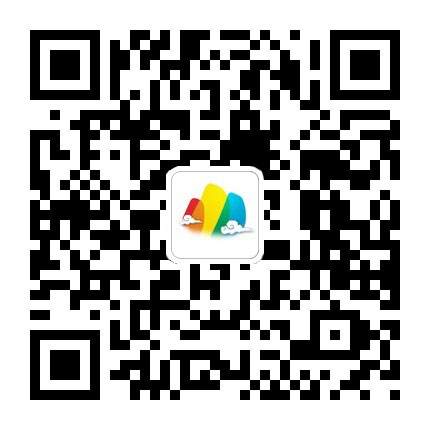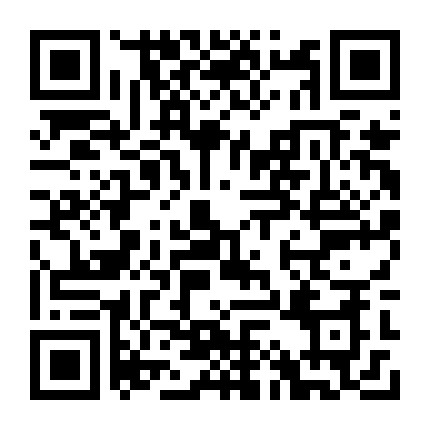上海小學(xué)三年級英語語法總結(jié)
- 2015-10-30 07:15:00
- RedYin 轉(zhuǎn)貼
- 16890
小學(xué)三年級英語語法
(一)情態(tài)動詞can
can 在英語中有一個特殊的名字,叫做情態(tài)動詞,表示“能夠”, “會”, “能力”后面要跟著表示動作的動詞。沒有時態(tài)和人稱的變化。表示不能做什么的時候,后面加上 not為 can not,或者縮寫為can’t。問別人“能…嗎?”要把can 放在句子前面,首字母要大寫,句尾別忘加上問號。
例句:—I can swing .I can draw.
—She can jump.He can play .
—We can touch .They can run.
—I can’t sing.You can’t see.
—She can’t dance.He can’t hear a car.
—We can’t hear an aeroplane.
—Can you hear a dog?Can he hear a bus?
—Can Lucy write?Can you do it?
將下面各組詞組成句子
1.________________________(an,aeroplane,hear,Lucy,can )
2. ____________________________ (not,he ,dance,can )
3.____________________________? (you,can ,see,what )
4.____________________________(can ,see ,not ,we ,you)
5._____________________________. (I ,can ,help ,you )
6._____________________________? (I,can ,do,what)
7._____________________________? (you ,can ,hear me)
8._____________________________? (you ,can ,dance)
答案:1. Lucy can hear an aeroplane. 2. He can not /can’t dance.
3. What can you see? 4. We can not /can’t see you
5. I can help you. 6. What can I do?
7. Can you hear me? 8. Can you dance?
(二)人稱代詞所屬格
. 人稱代詞表
|
人稱 |
主格 |
be動詞及其否定形式 |
所有格,形容性物主代詞 |
have/has及其否定形式 |
助動詞及其否定形式 |
賓格 |
|
單 數(shù) |
第一人稱 |
我 |
I |
am/am not |
my |
have/haven’t |
do/don’t |
me |
第二人稱 |
你 |
you |
are/aren’t |
your |
have/haven’t |
do/don’t |
you |
|
第三人稱 |
他 |
he |
is/isn’t |
his |
has/hasn’t |
does/doesn’t |
him |
|
她 |
she |
is/isn’t |
her |
has/hasn’t |
does/doesn’t |
her |
||
它 |
it |
is/isn’t |
its |
has/hasn’t |
does/doesn’t |
it |
||
人名 |
人名 |
is/isn’t |
人名’s |
has/hasn’t |
does/doesn’t |
人名 |
||
復(fù) 數(shù) |
第一人稱 |
我們 |
we |
are/aren’t |
our |
have/haven’t |
do/don’t |
us |
第二人稱 |
你們 |
you |
are/aren’t |
your |
have/haven’t |
do/don’t |
you |
|
第三人稱 |
他們,她們,它們 |
they |
are/aren’t |
their |
have/haven’t |
do/don’t |
them |
|
注意:主格作主語,其中she指帶代國家,it可指代天氣時間等。
賓格作賓語,介詞賓語,表語 。動詞后面用人稱賓格
形容詞性物主代詞作定語。
名詞性物主代詞作主語,賓語,介詞賓語,表語 書信yours…
表示 ---- 的,這樣的詞我們也學(xué)習(xí)很多了,你能想出來嗎?
記住這個小口訣就很容易了:我的 my ,你的your,他的 his、她的her. //它的是its; 我們的 our; 你們的是 your他們(它們,她們)的是their//這些人稱代詞形式稱為人稱代詞所屬格,也叫形容詞性物主代詞。通常用在名詞前面表示所屬關(guān)系。另外,表示某人的還可以用名詞或人名+ ’s 來表示。如:
my kite; your book; his pen; her coat; its tail; our class;
their teachers; my brother’s; book; the cat’s ears; Mary’s mother
一.寫出下列人稱代詞的所屬格形式
I________you_________he______________She_________it____________
we_____________You_________they_________
二.用合適的人稱代詞填空
(1) This is Ben. This is _______bicycle.
(2) I am Kitty. ______ bag is blue
(3) She’s Alice. That’s _____ umbrella.
(4) You are Mr Li. ______ car is black.
(5) Is this ______ hat? Yes, it’s my hat.
(6) That’s my mother. That’s _____ coat.
(7) Where’s ______ scarf? Here you are.
(8) He’s Mr Wang. _____ gloves are new.
三.翻譯下列詞組
1. 你的名字 _____________ 2.我們班___________
3. 他的小弟弟____________ 4.我祖母___________
5. 它的尾巴 ______________ 6.我的鞋____________
7. 她的圍巾________________ 8.我的襯衫_________
9. 他們的老師______________ 10.瑪麗的雨傘_________
四.用下列單詞組句
1.___________________________ (my , is,name , Tom)
2.____________________________ (is, miss , Gao, , our,friend)
3.____________________________ (is what ,your number ,telephone)
4.____________________________? (mother , your ,a teacher , is)
5.____________________________? (who’s , cap , it , is)
答案:一. I(my) you (your) he(his) she(her) it(its) We (our) you (your) they (their)
三. 1.your name 2.our class 3. his little brother 4.my grandmother 5.its tail 6.my shoes 7.her scarf 8.my shirt 9.their teacher 10. Mary’s umbrella
四. 1.My name is Tom. 2.Miss Gao is our friend 3.What’s your telephone number? 4.Is your mother a teacher? 5.Who’s cap is it?
(三)介詞、連詞和感嘆詞
1.介詞:介詞是一種虛詞,不能單獨使用,必須在介詞后面加上個名詞或代詞使用,作句子成份。
介詞后面的名詞(或相當(dāng)于名詞的其它詞)叫做介詞的賓語。介詞和介詞賓語合稱為介詞短語。介詞短語在句中可作壯語、定語或表語。
介詞如: in 在…里面 on在…上面 under在…下面等。
in the classroom in the tree in the hall
on the road on the desk on the floor
under the table under the bed under the chair
2.連詞:連詞是用來連接詞與詞、短語與短語、句子與句子等的詞叫連詞。連詞是一種虛詞,在句子中不能單獨作句子成分。連詞分兩類:一類叫等立連詞,另一類叫從屬連詞。
(1). 等立連詞是用來連接同等的詞、詞組和分句的。等立連詞有許多
我們現(xiàn)在只學(xué)到了and和but,其他的以后學(xué)到再介紹。
如:A and B ; blue and white ;an apple and a banana; a car and a bus; Lucy and Ben ; Ben and Kitty ;
This is a lorry and that’s a drill.
I like dolls and you like robots.
(2). 從屬連詞是用來引起從句的、從屬連詞又分為
1) 引起名詞性從句的連接詞,如:if ,that 等。
2)引起壯語從句的連接詞,如:when , after ,befare等。以后會逐漸學(xué)到再介紹。
3.感嘆詞: 表示說話人的某種感情(驚訝,高興,痛苦等)的詞叫感嘆詞。感嘆詞后常用感嘆號。常用的感嘆詞有:oh(表示驚奇或痛苦),ah(表示驚奇或滿意),hello(常被用來打招呼相當(dāng)于漢語的“喂!”),well(表示驚訝,無奈)
如:Hello.Are you Mary?
練習(xí):翻譯下列詞組
1.在桌子上面 2.在樹下面
3.在椅子上面 4.在盒子里面
5.在黑板上 6.在書里
7.在臉上 8.在公共汽車上
9.一只貓和一只狗. 10.又小又胖
答案:1. on the desk 2. under the tree 3. on the desk 4. in the box
5. on the blackboard 6. in the book 7. on the face 8. on the bus 9. a cat and a dog 10. small and fat
(四) 單數(shù)句和復(fù)數(shù)句:
口訣: 單數(shù)句子變,變化規(guī)則要記住。
名詞代詞要變化,am, is要變are。
this, that變成啥,these, those來替它。
he, she, it要變啥,全部變they不用怕。
I要變we莫落下,名詞后面把s/es加。
名前冠詞去掉它,其余成分原樣加。
具體注意下面的六要素:
1.單數(shù)主格人稱代詞要變成相應(yīng)的復(fù)數(shù)主格人稱代詞,即I→we; you→you; she, he, it→they。 如: She is a girl.→They are
girls.
2. am, is要變?yōu)?/b>are。 如: I'm
a student. →We are students.
3.不定冠詞a,
an要去掉。如: He is a boy. →They are boys.
4.普通單數(shù)名詞要變?yōu)閺?fù)數(shù)形式。如: It is a cat. →They are
cats.
5.指示代詞this,
that要變?yōu)?/b>these, those。如: This is a book.→These are books.
6. man, woman作定語修飾可數(shù)名詞時,要在 "數(shù)"上與被修飾名詞保持一致。但其他名詞修飾名詞表示 "性質(zhì)"時,不作變化。如:
He is a man doctor.→They are men doctors.
This is an apple tree.→They are apple trees.
單復(fù)數(shù)相互轉(zhuǎn)換,每空一詞(含縮寫)。
1. The woman is a nurse.(改為復(fù)數(shù)句)
The _________ _________ _________.
2. There are some old cars.(改為單數(shù)句)
There _________ _________ old _________.
3. He has a new book.(改為復(fù)數(shù)句)
_________ _________ new _________.
4. Are these your chicks ?(改為單數(shù)句)
_______ _______ your _______?
5. Is there a sheep in the playground?(改為復(fù)數(shù)句)
________ there ________ ________ in the playground?
(五)一般疑問句及特殊疑問句
句子基本是:簡單陳述句,由簡單陳述句轉(zhuǎn)變成肯定句,否定句,疑問句。疑問句是用來提出問題。英語中有四種疑問句: 一般疑問句、特殊疑問句、選擇疑問句和反意疑問句。我們現(xiàn)在已經(jīng)接觸到了前兩種疑問句。后兩種疑問句以后我們還會學(xué)到.
一.一般疑問句:
英語中要用 yes和no 來回答的疑問句叫一般疑問句。如:
1)Is it hot ? Yes, it is .\No, it isn’t. —— be動詞引導(dǎo)
2)Is it a car ? Yes, it is .\No, it isn’t . —— be動詞引導(dǎo)
3)Is this your ruler ? Yes, it is .\No, it isn’t . —— be動詞引導(dǎo)
4)Do you like bananas ? —— 含實義動詞
Yes, I like bananas. \ No, I don’t like bananas.
5)Can Ming hear a drill ? ——含情態(tài)動詞
Yes , Ming can hear a drill.\No,Ming can’t hear a drill.
.陳述句(肯定句,否定句,一般疑問句)的轉(zhuǎn)變規(guī)律:
1.肯定句: 2.否定句: 3. 一般疑問句及肯否定回答
1) 主語+be動詞+…. 1) 主語+be動詞+not+…. 1)be動詞+主語+…?
Yes, 主語+be動詞./
No, 主語+be動詞+not.
I am a teacher. I am not a teacher. Are you a teacher?
--Yes, I am./ No, I am not.
My mother is thin. My mother is not /isn’t thin. Is your mother thin?
--Yes, she is./ No, she isn’t.
They are insects. They are not/aren’t insects. Are they insects?
--Yes. they are./ No, they aren’t.
2) 主語+情態(tài)動詞can+… 2) 主語+情態(tài)動詞can+ not+…. 2)情態(tài)動詞can+主語+…?
Yes, 主語+情態(tài)動詞can/
No,主語+情態(tài)動詞can+ not
He can jump.
He can not/can’t jump.
Can he jump?
--Yes,he can./ No, he can’t.
3) 主語+動詞+…. 3) 主語+助動詞do/does+not 3) 助動詞do/does+主語
+…. 動詞原形 +….動詞原形?
Yes, 主語+助動詞do/does.
No, 主語+助動詞do/does+not.
He likes to eat apples. He doesn’t like to eat apples. Does he like to eat apples?
Yes,he does./ No,he doesn’t.
We like to eat apples. We don’t like to eat apples. Do you like to eat apples?
Yes,we do. /No,we don’t.
二. 祈使句:表示請求、命令、建議或勸告等的句子叫祈使句,主語you常省略。
1、肯定形式:一般以動詞原形開頭。 Open the door, please.
2、否定形式:在句首謂語動詞前加Don't。 Don't be late for class.
三 特殊疑問句(又叫wh-question)
用特殊疑問詞來提出問題的疑問句叫作特殊疑問句。特殊疑問詞一般要放在句首。常用的疑問詞有what who ,which how 等這些詞都以wh 開頭(包括how)所以也叫作wh-question。特殊疑問句要求回答具體內(nèi)容。不能用yes或no回答。結(jié)構(gòu):疑問詞+一般疑問句。回答不能用yes / no(或相當(dāng)于yes / no)回答的問句。答句的句式同肯定句句式:如:
What can you see ? I can see a cat.
What can you hear ? I can hear a bus.
What can you do ? I can sing and dance.
What is it ? It’s a panda.
What do you like ? I like playing football
How old are you ? I’m ten.
一.將下列句子變成一般疑問句
1 Mr Wang is thirsty __________________________?
2.The elephent’s ears are long __________________________?
3. We like birds _________________________?
4.Hello.You are his mother __________________________?
5.I can sing and dance. ___________________________?
二 將下列每組詞各組成一句特殊疑問句
1.(you are how). _________________________?.
2.(old how Ben is)_________________________?
3.colour is what your shirt_________________________?
4.(can see what the on you desk ) ________________________?
5.(like what do you)_________________________?
答案:一.1. Is Mr Wang thirsty? 2. Are the elephent’s ears long 3. Do you like birds? 4.Hello. Are you his mother? 5.Can you sing and dance?
二.1. How are you? 2.How old is Ben ? 3.What colour is your shirt? 4.What can you see on the desk? 5.What do you like?

關(guān)注智慧山微信公眾號(zhihuishan2013)后,在公眾號里回復(fù)以下關(guān)鍵字,即可得到相應(yīng)資源!
公開課、作文、復(fù)習(xí)、試卷、知識點、活動、拼音、字母、鐘表、看圖寫話、故事、雙語故事、成語、常識、APP、語文、數(shù)學(xué)、英語、百家姓、三字經(jīng)、唐詩三百首、自助查詢、超級口算
- 兒童故事
- 教育資源
- 小學(xué)語文
- 小學(xué)英語
- 小學(xué)數(shù)學(xué)
- 資源下載
- 專家講座
- 智慧山微課
- 少兒英語
- 專項復(fù)習(xí)
- 各科教材
- 課外讀物
- 育兒博客
- 書籍推薦
- 胎教音樂
- 經(jīng)典兒歌
- Scratch編程
- 一年級新生
- 飲食健康
- 學(xué)齡前
- 兒童電影
- 成長故事
- 學(xué)習(xí)寶典
- 幼小銜接
- 古詩文
- 影視動畫
- 科學(xué)小實驗
- 精選課程
- 書法比賽專用
- 首頁課程介紹
- 小學(xué)指南
- 智慧山活動
- 說明
- 家庭教育
- 曬飯—一早一晚
- 兒童編程
- 認知階段Scratch圖形化編程
- 理解階段Python人工智能語言
- 運用階段C++及信息學(xué)競賽
- code.org作業(yè)答案
- code.org作業(yè)視頻講解
- 編程網(wǎng)站
- python入門課作業(yè)答案
- python1(上)作業(yè)答案
- python1(下)作業(yè)答案
- Scratch入門課作業(yè)答案
- 作業(yè)解析
- Scratch相關(guān)資源
- python2(上)作業(yè)答案
- Scratch Level 1作業(yè)答案
- python2(下)作業(yè)答案
- Python3(上)作業(yè)答案
- Scratch Level 2作業(yè)答案
- 國家政策及比賽
- 2022年P(guān)ython寒假課
- 2022年Scratch寒假課
- 編程網(wǎng)站
- 智慧山圖書館
- 小升初
- 英語學(xué)習(xí)
- 智慧家庭教育




